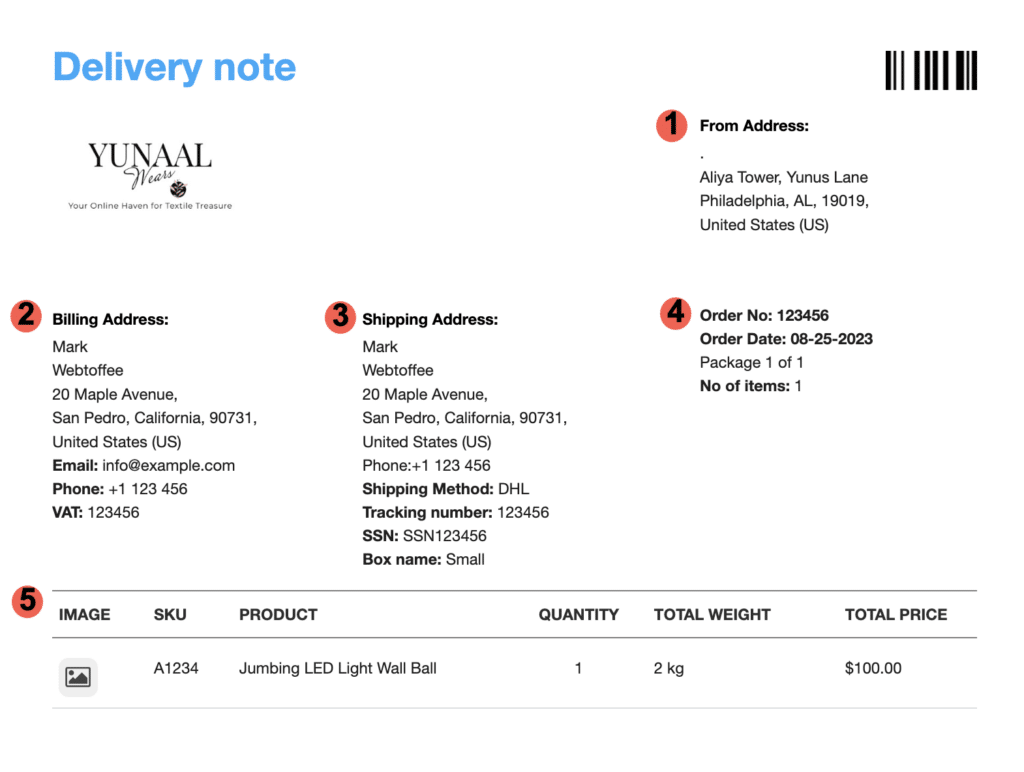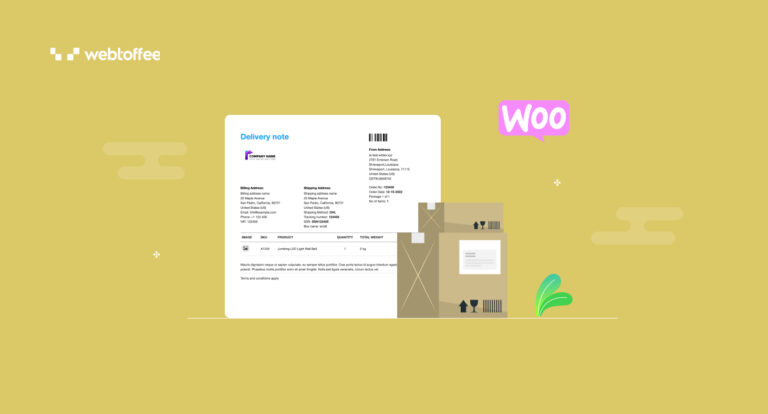Delivery ensures smooth and accurate transactions in order fulfillment and logistics. Whether you’re a business owner, a customer, or anyone involved in the process of sending or receiving goods, understanding how and when to use delivery notes is essential.
These documents hold information that helps streamline operations, enhance accountability, and provide a seamless experience for all parties involved. This blog will dive into the ins and outs of delivery notes and uncover their importance for efficient deliveries.
So, let’s begin.
A delivery note is a document used in business transactions to confirm the delivery of goods from a seller to a buyer. It typically includes essential details such as the type and quantity of goods delivered, the date of delivery, any accompanying documentation or instructions, and the recipient’s acknowledgment of receipt.
Delivery notes are crucial for maintaining transparency, accountability, and accurate record-keeping throughout the supply chain and are especially valuable in instances where formal proof of delivery is required, such as in international trade or when goods are being transported between different parties.
Even though delivery notes are not mandatory, certain details are necessary when preparing one. A delivery note should include the following information:

1. Sender Information: This includes the details of the company or individual sending the goods, such as their name, address, and contact information.
2. Billing Information: This includes the address and details linked to the individual or business responsible for placing an order and receiving the corresponding invoice.
3. Receiver Information: Information about the recipient of the goods, including their name, address, and contact details.
4. Order details: This includes details like the order number and order date.
5. Description of Items: A list of the items included in the shipment, along with their quantities, sizes, and any other relevant details. This helps both parties ensure that the correct items have been delivered.
Normally, a delivery note doesn’t include the prices of the products inside the package, but there is no restriction on including the price details as well.
Delivery notes are not compulsory, but they hold substantial value in business transactions and are therefore recommended. While there might not be a strict legal requirement in every situation, using delivery notes is a common practice to ensure accurate record-keeping, provide proof of delivery, and establish a clear communication trail between sellers and buyers.
Especially in industries like logistics and trade, delivery notes help prevent disputes, support efficient inventory management, and contribute to a smooth exchange of goods. While their use might vary, recognizing the benefits of delivery notes can greatly enhance the reliability and professionalism of any business operation.
Delivery notes are necessary for several reasons in business transactions, especially in the context of goods delivery and supply chain management. Here’s why delivery notes hold significance:
Proof of Delivery: Delivery notes serve as documented evidence that the goods have been successfully delivered to the intended recipient. They provide a clear record of the transaction, reducing disputes and ensuring accountability.
Accurate Record Keeping: Delivery notes help maintain accurate records of all outgoing shipments. This is crucial for tracking inventory, managing stock levels, and reconciling orders with deliveries.
Customer Satisfaction: Delivery notes provide transparency to customers, showing them what items they should expect to receive. This helps build trust and enhance customer satisfaction.
Point of Reference: If there are any discrepancies between the ordered goods and the received items, the delivery note can be used as a reference point to resolve disputes between the buyer and seller.
In essence, delivery notes contribute to transparency, accuracy, and efficiency in the movement of goods, ensuring that the right products reach the right recipients in a timely and organized manner.
Delivery notes do not typically hold inherent legal power on their own, but they play a significant role in establishing evidence and documentation in business transactions. The legal significance of a delivery note often depends on the context, the laws and regulations of the jurisdiction, and how the note is used in conjunction with other documents and agreements.
Here are some key points to consider regarding the legal status of delivery notes:
Evidence of Transaction: A properly executed delivery note can serve as evidence of the completion of a transaction and the delivery of goods. It can help resolve disputes by demonstrating that the goods were delivered as agreed upon.
Compliance with Regulations: In certain industries or jurisdictions, there may be legal requirements for maintaining proper documentation, including delivery notes, for tax, regulatory, or customs purposes.
Supporting Legal Actions: While a delivery note itself may not have the power to initiate legal action, it can support legal proceedings or claims. For example, it can be used as supporting documentation in cases of non-payment, breach of contract, or other disputes.
There are different ways to issue a delivery note:
Paper Format: This is the usual method. You include the delivery note on paper with the goods being shipped.
Electronic: You can also email the delivery note before the goods are delivered, but usually, it’s sent on paper along with the shipment.
You can easily get ready-made printed delivery notepads from stationery shops or online. There are also free, editable templates available online. Additionally, different software are available that include templates as part of its package or as a separate purchase.
If you own a WooCommerce store, you can easily create delivery notes using the WooCommerce delivery notes plugin by WebToffee. It can help you create delivery notes that suit your store’s custom needs and automate the generation of delivery notes for every order placed.
Conclusion
Delivery notes are small yet powerful documents that play a vital role in ensuring smooth and transparent business transactions. Whether in paper or electronic form, they serve as tangible proof of successful deliveries, aid in inventory management, and facilitate effective communication between parties.
By understanding the importance of delivery notes and how to issue them correctly, businesses can enhance their operations, build trust with customers, and maintain a clear record of their product exchanges. Embracing the simplicity and significance of delivery notes can lead to more efficient processes and contribute to overall business success.




Comments (2)
Peol Solutions
April 17, 2024
Clear explanation of delivery notes. Appreciate the simplicity and usefulness of the information provided. Great resource for businesses!
Sanjai Valsan
April 18, 2024
Hi,
Thank you for your kind words and feedback! We’re delighted that you found the explanation of delivery notes clear and helpful. If you have any more questions or need further information, please don’t hesitate to reach out to our customer support team.